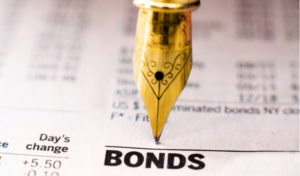
Image used under license from Shutterstock.com
Originally posted November 1, 2017.
A phrase I often hear from prospective clients is, “I don’t understand bonds, but I know I need them, and that’s one of the reasons I’m talking with you.” There’s a lot of wisdom in that phrase. It’s like saying to your dentist, “I don’t understand root canals, but my tooth is killing me and I know I need one, and that’s the reason I’m sitting in this chair.” Knowing what we need is different from understanding how to do it.
When I think back to when I first joined Dick Young’s management firm in 1998, he had a huge following of investors seeking guidance in U.S. Treasury zero-coupon bonds. Investors knew they were a safe way to keep and make money (thanks to Dick) but they didn’t really know how to construct a portfolio of them. The same was true for preferred stocks where investors needed help wading through a sea of products. And all along, the beacon over the dark horizon was the ever present “North Star,” the Treasury Bill, guiding the way. It’s doing the same today.
Today nothing has changed in terms of the T-bill’s guiding principles. What has changed is its position over horizon, if you will. Back in 1998, it was a steady beacon of light yielding around five percent. Today it’s a mere flicker yielding around one percent. What has changed? Not much as far as I’m concerned.
Just like back in 1998 my work today will revolve around conversations with clients and prospective clients. Not once have I been asked “E.J. tell me where the T-bill is this morning?” or, “How did the T-bill do yesterday?” or “Where is the T-bill today?” But, replace T-bill with “the market” and you have the beginning of a conversation about the future.
Which brings me back to 1998 when the T-bill was paying around five percent. There’s no way anyone could predict with any kind of certainty, whatsoever, that T-Bills would pay less than one percent, period. But that’s the world we are living in today and the near future. And without giving any thought to where the T-Bill will be next year or in twenty years, I can tell you without hesitation that bonds should play a role in your portfolio.
You may not understand bonds, but if you know what it feels like to lose money, you may opt for a root canal. And while everyone talks about “the market,” they continue to forget that the North Star is still shining—although not nearly as bright as it once did.
E.J. Smith - Your Survival Guy
Latest posts by E.J. Smith - Your Survival Guy (see all)
- Yes, Money Can Buy You Happiness - April 23, 2024
- State Income Taxes and the 2024 NFL Draft Class - April 23, 2024
- This ARK is Sinking - April 23, 2024
- “That’s Why I Hired You,” They Tell Me - April 22, 2024
- The Silver Lining of Higher Interest Rates - April 22, 2024















